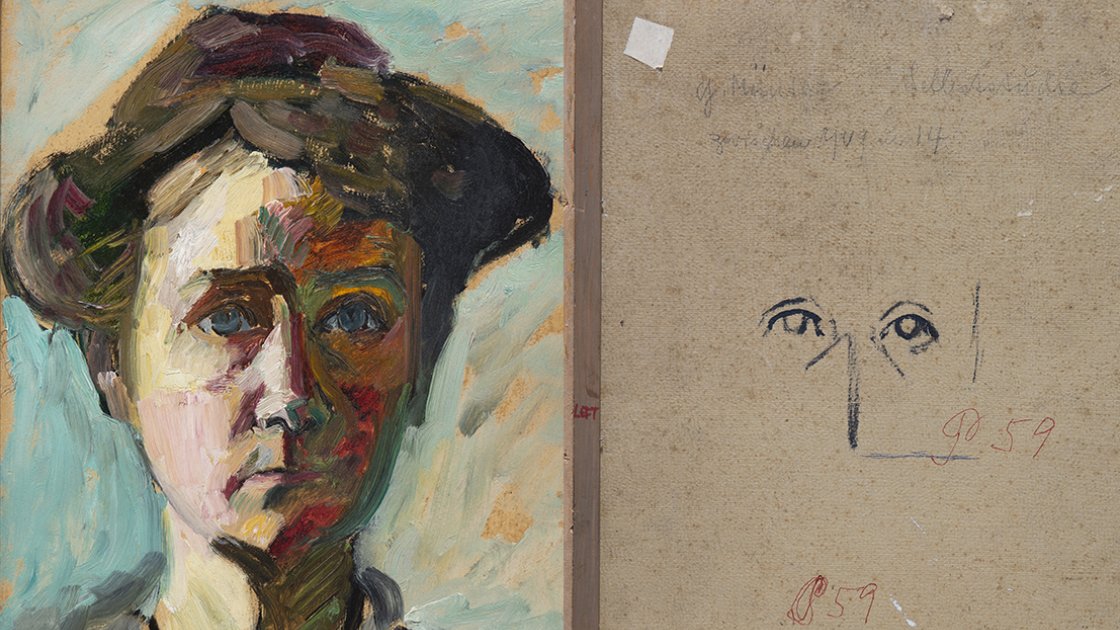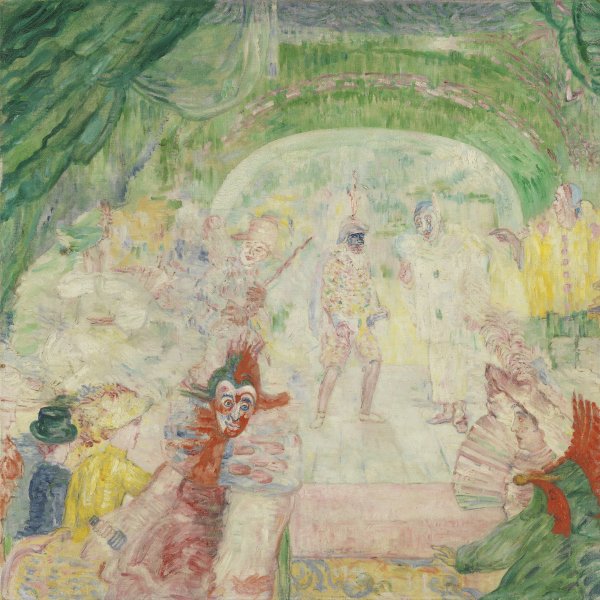Self-portrait
‘The painting of portraits is the boldest and the most difficult, the most spiritual, the most extreme task of the artist’, wrote Gabriele Münter in 1952. The artist, who always considered portraiture to be one of the essential genres of her output, depicted herself in at least 16 oil paintings, many of which, such as the Museo Thyssen-Bornemisza version, were painted during the years she belonged to the Expressionist group The Blue Rider (Der Blaue Reiter).
In the portraits of friends and acquaintances executed from 1908–9 onwards, Münter made an effort to synthesise their qualities, which resulted stylistically in the application of flat colours delimited by thick, dark outlines. These devices, typical of her Expressionist style, are not found in this self-portrait which, despite the free use of colour, is dominated by textured brushstrokes and the chiaroscuro characteristic of her first Postimpressionist period. However, although years ago it was dated to around 1908, at some point before her stylistic shift, it is now thought that it may have been executed between 1909 and 1910, when the artist began to use black increasingly in her works. As at other times during her long life, she employed the execution technique and language best suited to her expressive needs, proving her ability to combine them.
Münter sketched her features and captured an accurate physical likeness, as comparison with photographs from the period shows. However, the painter’s true aim was not to faithfully reproduce her outward appearance but to succeed in capturing what was hidden: her own soul. The full concentration in her gesture, serious and self-engrossed, causes the rest of the picture to be barely sketched, though certain features, such as the off-centre neckline of her smock, help heighten the impression of a lack of balance in the composition.
Despite having been painted at a time when Münter was part of the German artistic avant-garde, this work does not appear to have been executed to demonstrate her status as a painter but as a private exercise in introspection. The fact that the artist never exhibited it and kept it in her studio until her death in 1962 appears to confirm this hypothesis.
Marta Ruiz del Árbol










